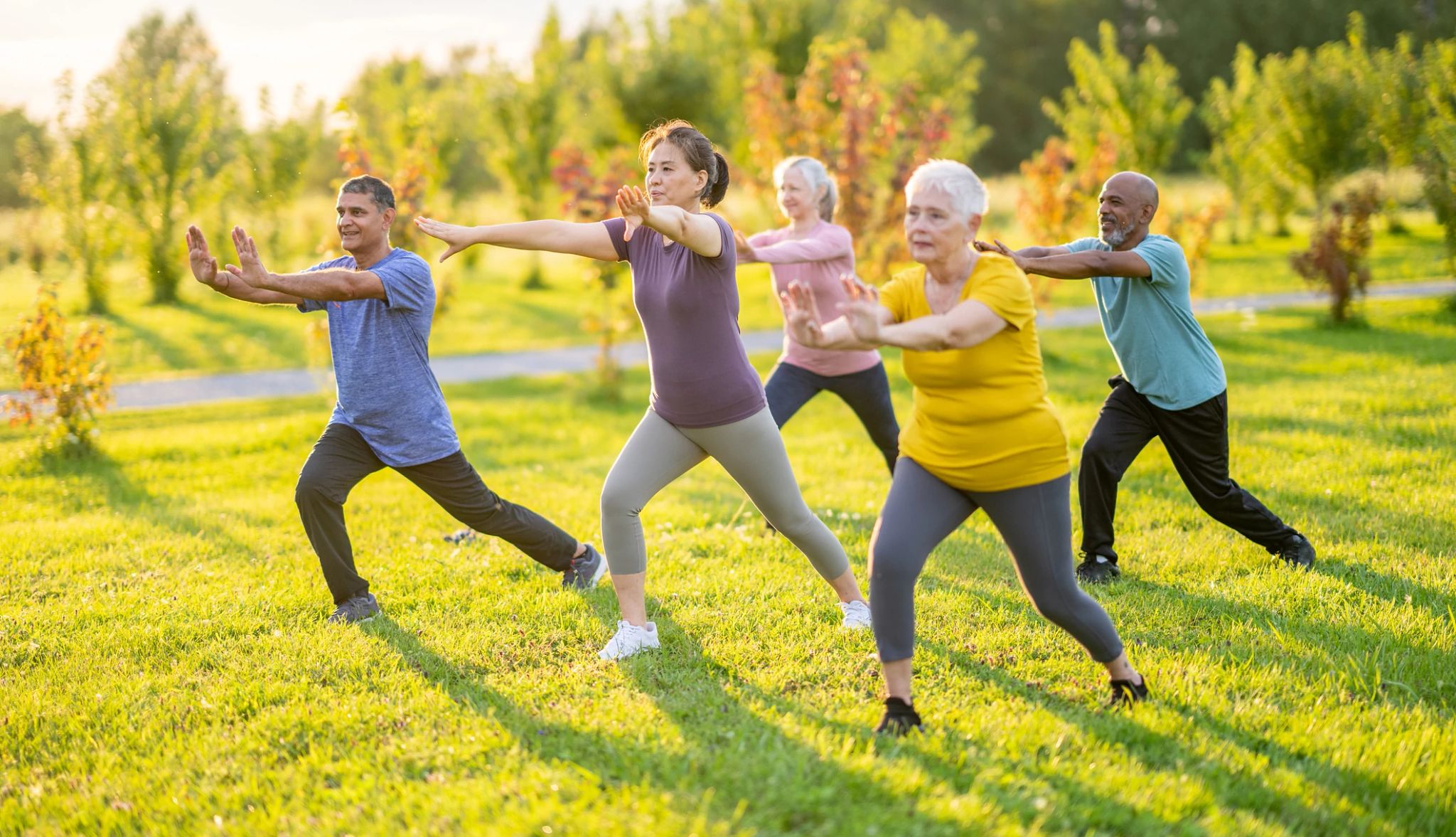AARP Hearing Center


With benefits that include reducing blood pressure, boosting brain health and preventing falls, tai chi is at the top of the list of recommended exercises for older adults.
The research on the benefits of tai chi has long been compelling, says Ardeshir Hashmi, M.D., section chief of Cleveland Clinic’s Center for Geriatric Medicine.
Dozens of studies have found the ancient art form can prevent falls, boost cognition, reduce blood pressure, ease pain and more.
But after Hashmi heard prominent tai chi researcher Elizabeth Eckstrom speak at an American Geriatrics Society conference a few years ago, Hashmi said tai chi vaulted to the top of his list of exercise recommendations for the older adults.
He says Eckstrom had patients at the conference talk about how tai chi had changed them. One woman who spoke was able to walk again after using a wheelchair for years. Another patient was able to stop using supplemental oxygen after just six months of regular tai chi.
“I would not have believed this just reading the research, but she had these people come up on stage,” Hashmi said. “So that was pretty compelling living proof.”
Now, Hashmi says, tai chi is the No. 1 activity his clinic recommends for older patients. He also recently started practicing tai chi himself.
What is tai chi?
Tai chi is a traditional Chinese practice that combines a series of slow movements and physical postures with meditation and controlled breathing. Its movements are designed to balance your body’s energy, or qi (pronounced “chi”). Many refer to tai chi as “meditation in motion” or “moving meditation.”
Eckstrom, chief of geriatrics in the division of general internal medicine and geriatrics at Oregon Health & Science University, says what’s especially notable about tai chi is that it requires you to perform physical activity while simultaneously meditating, focusing and remembering a series of movements.
Doing something that requires concentration when you’re also moving your body has been shown to have more benefits than doing one or the other alone, Eckstrom says.
“You’re using your body, but you’re also using your brain,” Eckstrom explains. “So (tai chi) works on balance and posture and gait, but it also works on mind-body stability and really enhancing your ability to perform functions in a kind of structured way.”
Who can do tai chi?
Tai chi is a low-impact exercise that doesn’t require any special equipment. It can be practiced indoors or outdoors, and you can do it alone or in a group setting. You can even do it while sitting.
Because it’s so versatile, anyone can do it, Eckstrom and Hashmi say.
To see the biggest benefits, aim to practice for an hour at a time two to three days a week for at least six months, Eckstrom suggests. “You have to stick with it for a while,” she says.
To find a tai chi class near you, check local fitness centers, health clubs, hospitals, community centers or senior centers. Some places offer specific programs focused on balance or arthritis, Eckstrom says.
You can also access tai chi videos online. (See box.)
Like other forms of exercise, tai chi will help you build muscle and improve flexibility. But it also conveys a variety of other health benefits. Here are eight unexpected health benefits of tai chi:































































More on Health
Health Benefits of Pilates
Test your knowledge in our quiz
Best Exercise for Lowering Blood Pressure
New study finds this is #1Try These Tips for Living a Healthier Life
Small changes can add up to big mental and physical results
Recommended for You